Are fava beans in your spring grocery list? Maybe you haven’t tried them yet and you don’t even know what fava beans are. You will learn everything about them today. Then you can use them in salads, soups or side dishes like rice.
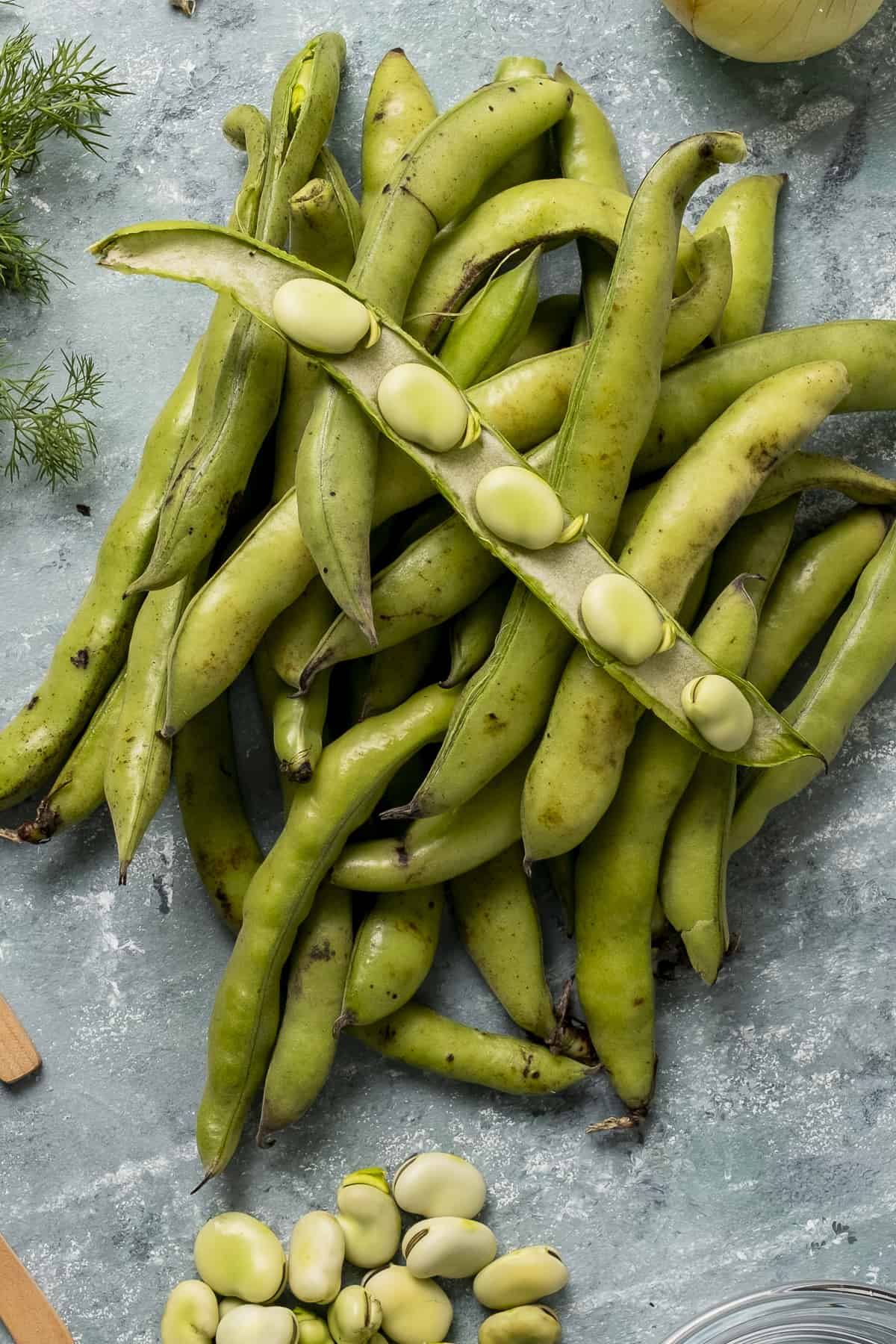
Fresh fava beans, also known as broad beans, are a sign of spring for us and we love making recipes with them. Once the fava bean season starts in early March, we get so excited to make fava bean recipes.
If you want to include these special beans in your diet too, you might want to learn our dried fava beans recipe and fresh fava beans recipe.
You might be wondering how fava beans look, taste or smell, whether they are the same as edamame and what health benefits they have. In today’s post, we are answering all your questions related to fava beans. So let’s start!
Jump to:
What Are Fava Beans?
Do you know that fava beans have different names around the world? Some of these names are broad beans, wide beans, faba beans, field beans, horse beans and English beans.
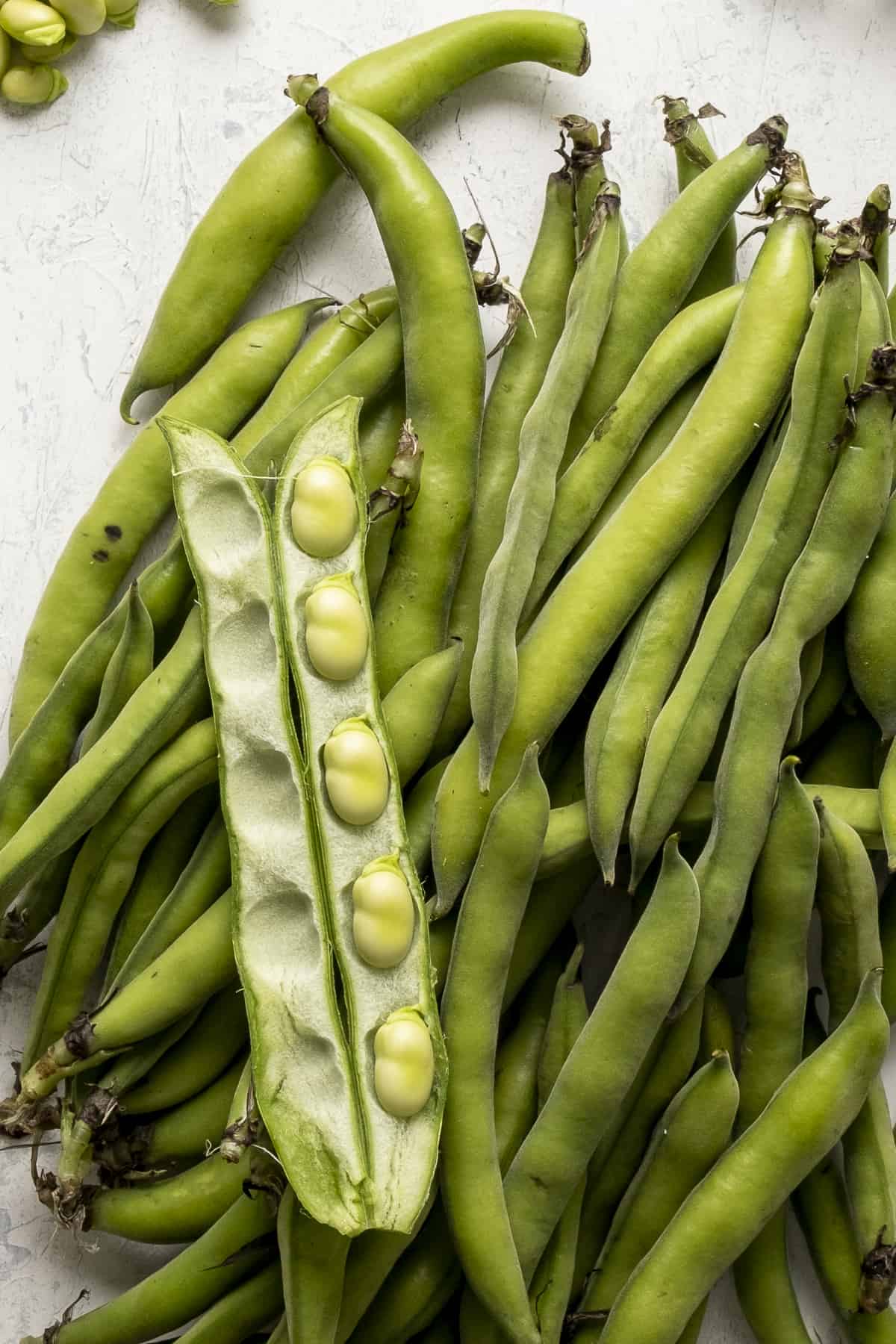
Fava beans are beans with broad and cushy green pods. There are round or oval 4-8 seeds inside each pod. The seeds inside are tiny in the early spring when the favas are young. And the pods are bright green, smooth and edible just like regular green beans. But this is not very common around the world.
As they grow, the seeds get larger and the pods get tough and bumpy with brown spots and are no longer edible. The mature beans are removed from their pods and shelled to be cooked. This is the most popular way to use broad beans.
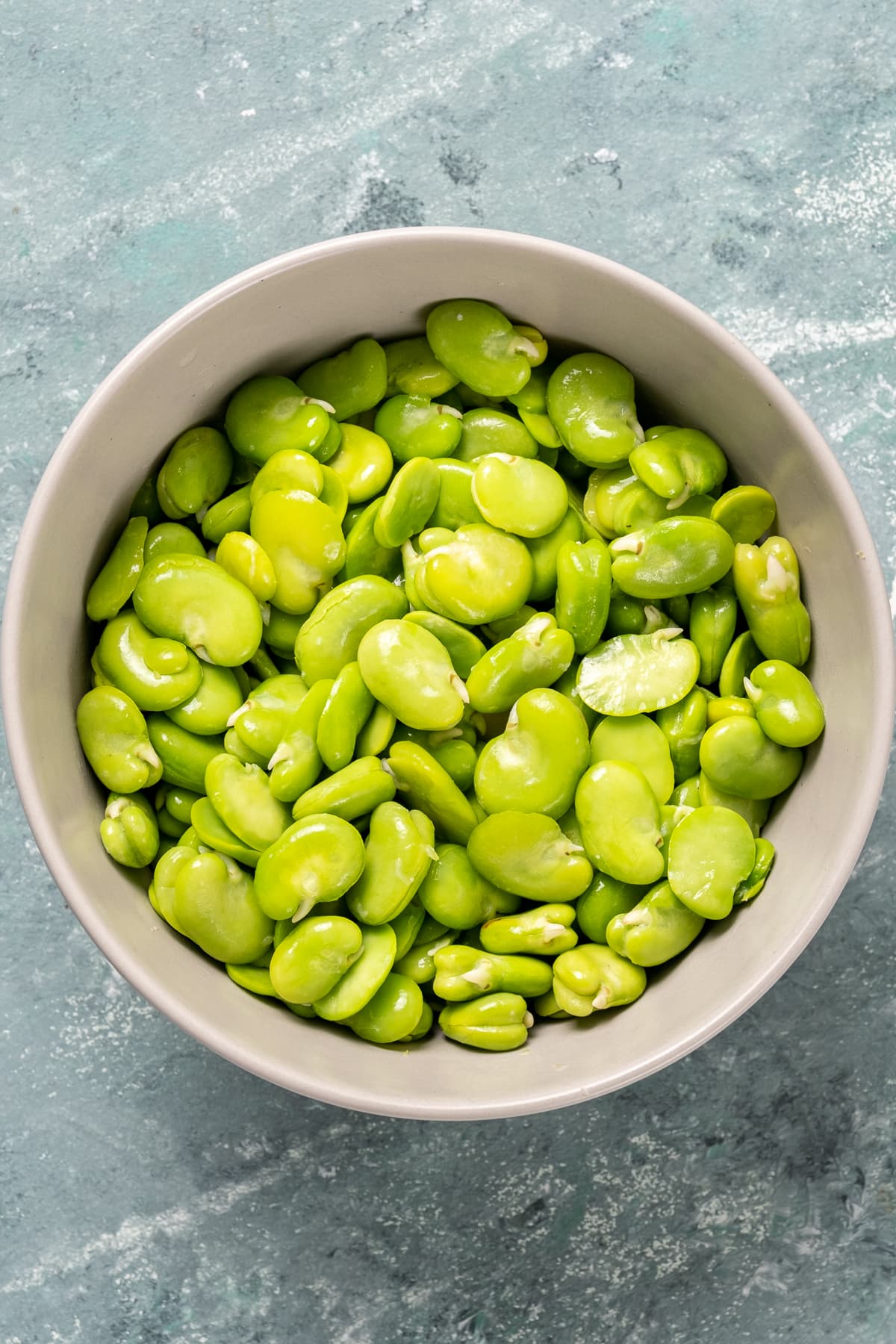
Their season is really short, so you had better buy some once you see them at the market.
Fresh broad beans have a unique nutty flavor and a creamy texture when they are shelled and cooked. But some people might find them earthy and a bit bitter, so they don’t like the taste. Fresh favas are one of those foods you either love or hate.
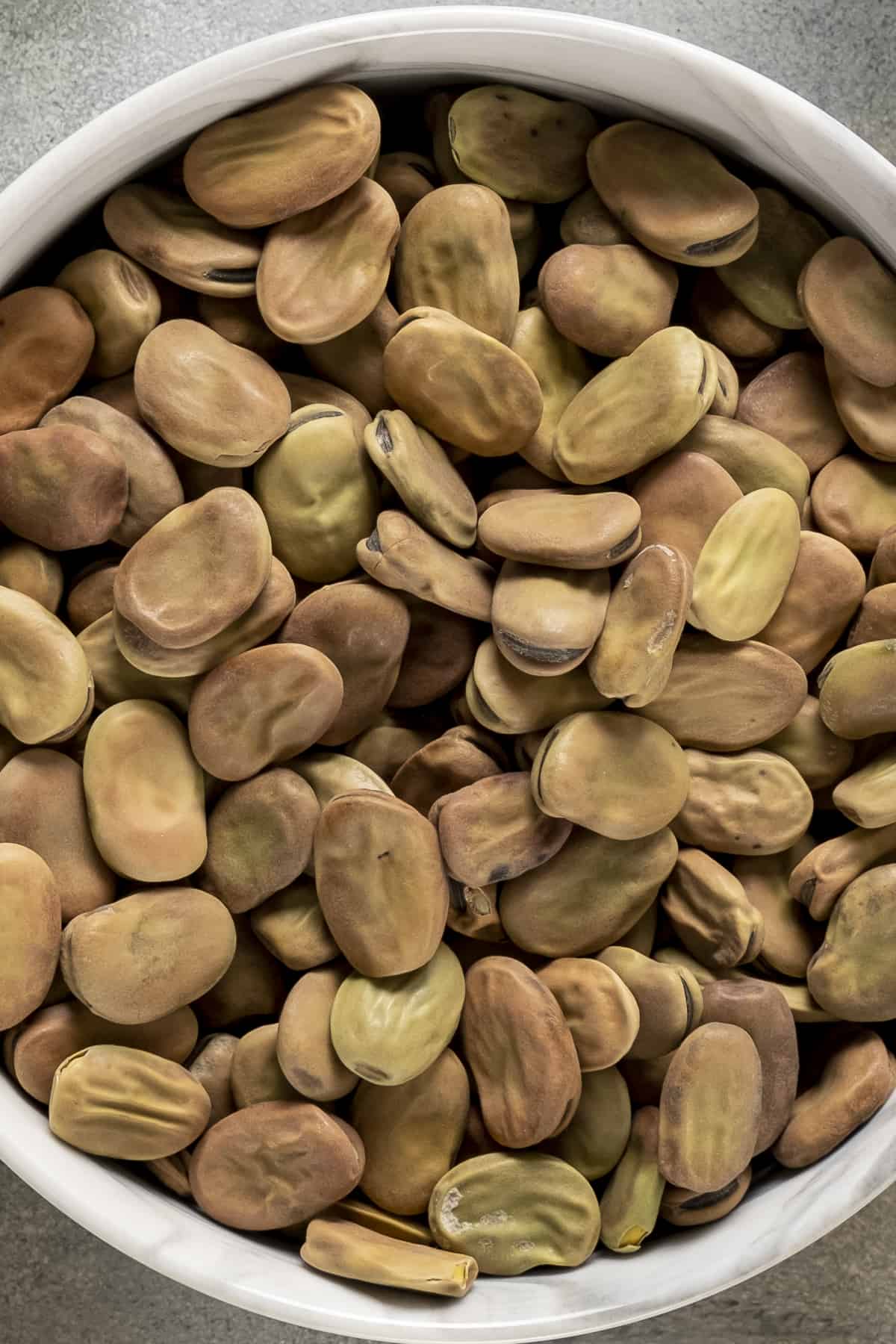
You can also see dried fava beans at markets. They are sold in packs and need to be soaked and shelled before cooking. It is possible to find them canned too. Canned fava beans are already peeled and cooked.
Dried favas have a milder taste. Check out our dried fava bean dip recipe if you haven't yet. You might even feel like you are eating something between chickpeas and lentils.
What foods are fava beans in?
As they grow in pods, fava beans are a type of legume. Unlike the other types like butter beans, garbanzo beans (chickpeas) or cannellini beans, which are used dried, fava beans can be used both fresh and dried.
Broad beans are often confused with edamame because they have a similar look. Edamame are fresh soybeans, so they are not the same as broad beans. That being said, they have similar tastes and textures, so edamame can make a great substitute for fresh fava beans.
Are They Safe To Eat?
Yes, fava beans are completely safe and have several health benefits. They are nutritious and rich in protein, minerals and vitamins like magnesium, fiber, manganese, potassium and copper. So they are great for immunity and parkinson's disease (source).
One cup of cooked fava beans has 187 calories. Please check the full fava bean nutrition data here.
On the other hand, fava bean (Vicia faba) might lead to a health problem for some people. It causes an allergic-like reaction called favism, which is a genetic disorder and produces acute hemolytic anemia in severe cases. It occurs only in people who have inherited G6PD (glucose-6-phosphate dehydrogenase) deficiency (source). So if you are diagnosed with G6PD, you had better avoid eating broad beans.
Storing
You can store fresh fava beans (in pod) in a paper bag in the fridge for up to 10 days. Double podded broad beans (pods discarded and the inner skin on beans are removed) won’t keep that long. Keep them in an airtight container in the fridge for 2 days or in freezer bags in the freezer for a few months.
Cooking Fava Beans
Young and tiny broad beans can be cooked whole and it is one of the most popular vegetarian dishes in Turkey.
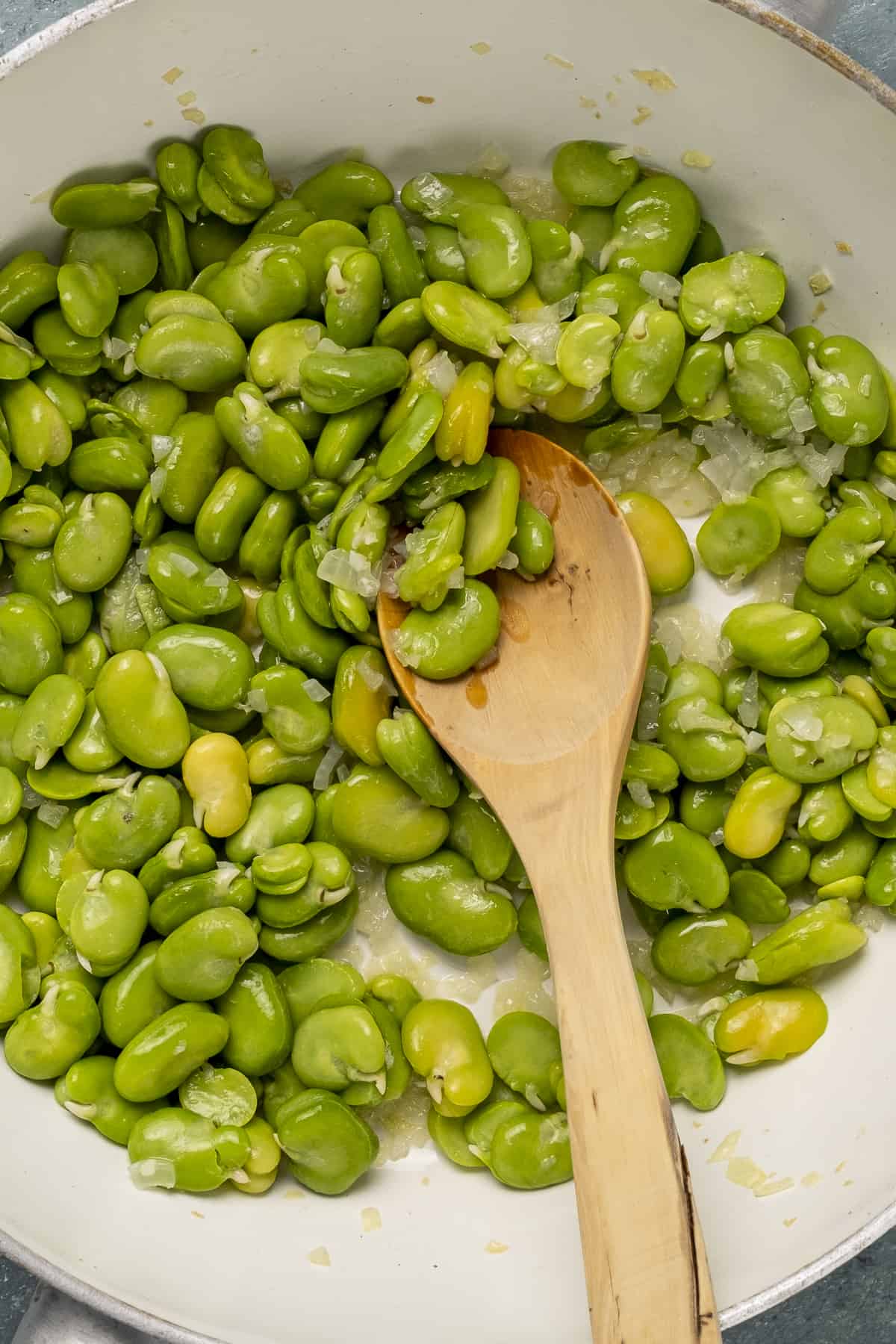
The most popular way to prepare fresh broad beans for cooking is to double pod them. Remove the beans from the pod using your thumb or forefinger. Blanch the podded beans in hot water and remove their skin for the perfect result.
To learn more, check out our post about cooking fava beans.
That’s an easy step if you know how to shell fava beans. After this preparation, how to cook broad beans depends on the recipe you are following. You can use them in rice, salad, soup or stew recipes.
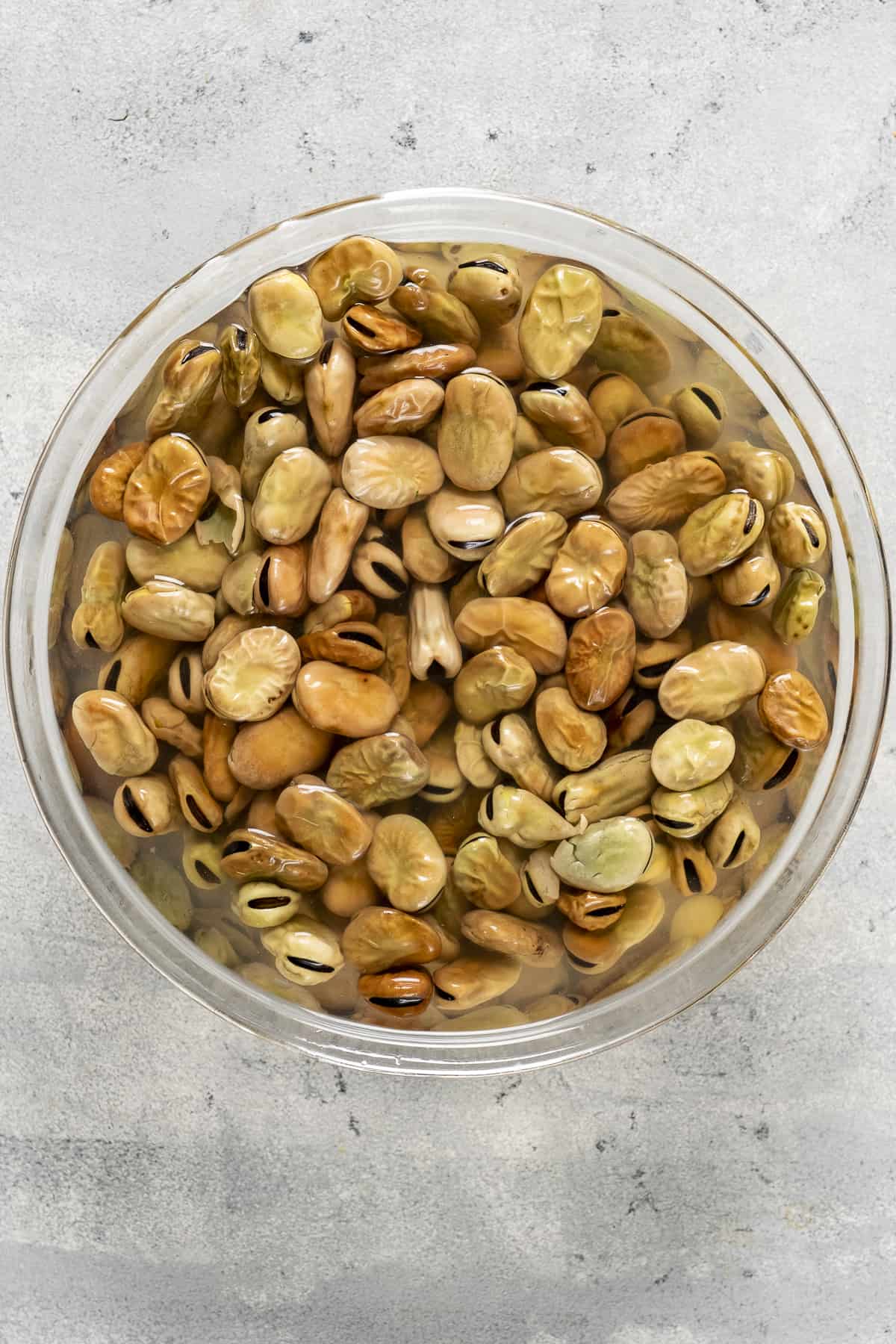
Dried fava beans are as popular as fresh ones. They taste like chickpeas and lentils and have a similar cooking process. You need to soak dried broad beans overnight just like you would do when cooking chickpeas or other dried beans.
Also, you can buy frozen green fava beans and canned fava beans.
Which Cuisines are They Popular in?
Fava beans are popular in several cuisines including Middle Eastern, Mediterranean South American and African cuisines. We have gathered some of those cuisines with their popular recipe below:
- Turkish cuisine: One well-known Turkish recipe with fava beans, also known as bakla, is a traditional Aegean dish. It is made from dried fava beans or fresh fava beans, onions, sugar, and dill. The beans are either pureed or left as they are and served with olive oil and lemon juice.
- Lebanese cuisine: Lebanese Ful Medames is a popular breakfast recipe served with garlicky olive oil and lemon sauce.
- Iraqian cuisine: Iraqian Rice Timman Bagilla is a popular rice dish served on its own or with chicken or lamb.
- Egyptian cuisine: Egyptian Fava Bean Stew is a breakfast recipe made with dried beans that can be served any time of the day.
- Italian cuisine: Italian Fava Beans Recipe with Tomatoes uses shelled fresh fava beans and lots of tomatoes. It is a great side dish or a light lunch you can enjoy with some crusty bread.
- Indian cuisine: Indian Broad Beans Curry is a stir-fry recipe with peanuts and often served with rice or roti.
- Mexican cuisine: Fava Bean Soup is made with fava beans, onions, tomatoes, garlic, and nopales. It is a flavor packed soup for cold days.
- Greek cuisine: Greek Fava Recipe is a dip that is actually not made with fava or broad beans, it is made with yellow split peas. It has a velvety texture with a little sweet taste.
Buying
You can buy fresh fava beans at the markets, especially at farmers’ markets during spring. If you are planning to cook them whole, look for bright green, tiny and firm pods. These are young enough and you can cook them right away without podding or shelling.
As they grow, the beans get larger and the pods get tough and inedible. You need to remove the beans from the pods, blanch and peel them before cooking. When buying these, make sure they are not mushy or dried out.
You can also find frozen, canned or dried fava beans at the grocery section of Middle Eastern markets or online markets.
FAQs
They might change color when they are exposed to metal and water. To prevent this, use a wooden spoon when cooking them. Also squeeze lemon over them and then cook.
Yes you can eat them raw as long as they are young with a bright green color. Yet, we don’t recommend it in large amounts.
Yes, they are. Favas are a packed with folate, which is good for healthy fetal development. So they are recommended to pregnant women (source).
Other Bean Recipes
You Might Also Like:
Recommended:
As always: If you make this recipe, let us know what you think by rating it and leaving a comment below. And post a pic on Instagram too—tag @give_recipe so we can see!
Sign up for the FREE GiveRecipe Newsletter to get the new recipes into your inbox! And stay in touch with us on Facebook, Pinterest, YouTube and Instagram for all the latest updates.


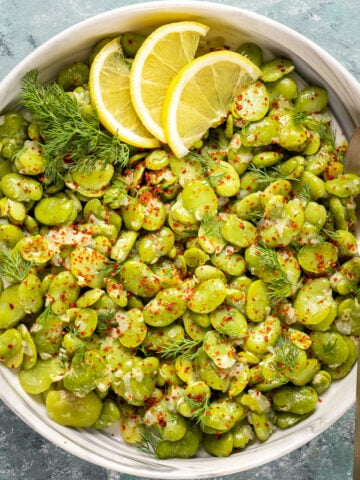
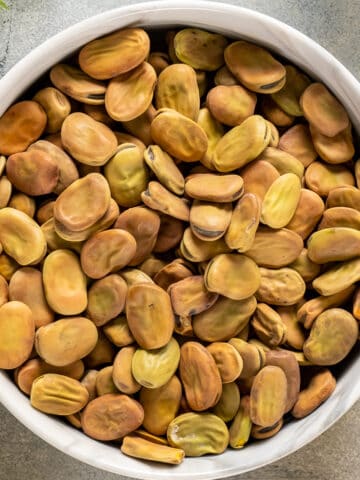
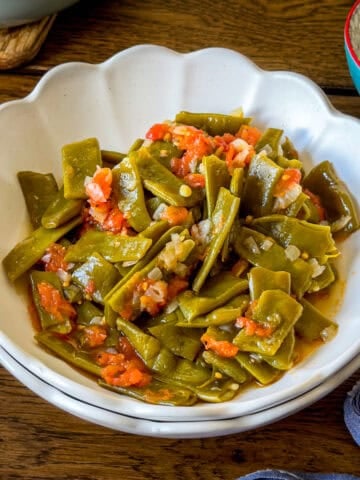
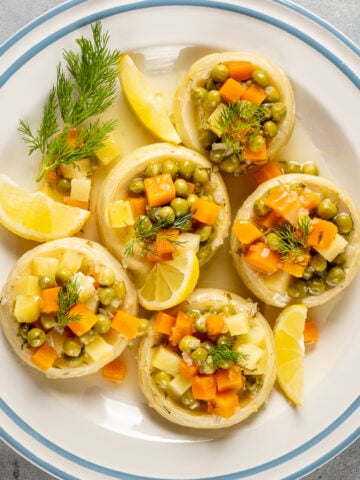
Leave a Reply